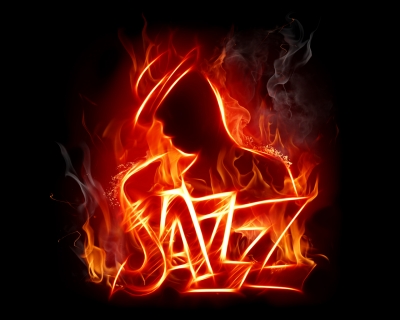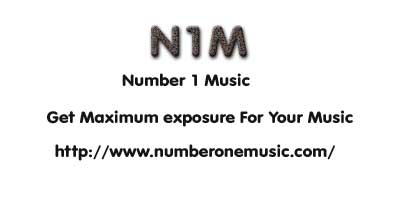I used to tell people I met on airplanes or at parties that I wrote about jazz for a living. Once they got past wondering just what type of "living" that amounted to, they'd smile and say, "I love jazz," then pause, adding, "But I don't know that much about it."
They were leery, thrown off by chart-and-graph references to jazz's development — stuff like how '40s swing begat '50s bebop, which gave rise to '60s free-jazz and all that. As if there was a textbook (well, actually some critic friends of mine are writing one, but that's another story) and there might be a test, you know. Not to mention the political squabbles: why swing was king or bop the thing or how '70s fusion killed it all.
Or maybe they'd been put off by all that technical talk: flatted fifths and extended chords and the numbers behind swing's rhythmic propulsion — like it was rocket science or something.
Then there's the cult aspect: those older guys bending and swaying at the back of the club, making like Jewish elders swaying to an fro at temple, or the generalized bowing down before deities such as Louis Armstrong and Charlie Parker and John Coltrane (not to mention the infighting about just who deserves saintly status).
Thing is, jazz isn't any of that — and is all that. Appreciation requires no previous knowledge, yet continued listening offers all constant enrichment. The technical aspects of jazz's musical achievements have both the beauty and complexity of higher math: And the music has genuine religious heft, owing to both time-honored spiritual traditions and in-the-moment meditative thought.
Round About Midnight (1957) - Miles Davis and John Coltrane
I can't give you a 12-best list, or tell you that what follows tells the story in full. But the following list expresses lineages of thought, instrumental technique, rhythmic ideas and group conception. The dots are easy to connect, the names clearly indicated and the sounds unforgettable.
And this list is like those sponge toys that, placed in water, magically grow overnight. Listen, and you'll find expansive knowledge easily absorbed, not to mention natural links to many more artists and recordings.
Listen Hot Fives And Sevens
Artist: Louis Armstrong
Release Date: 1925
To tell the story of jazz without Louis Armstrong up top is to cut off the head of the living organism that is jazz. Armstrong was a giant of a trumpeter, he was an influential singer and perhaps most important, he transformed jazz from a strictly instrumental music into a complicated blend of solo and ensemble sound. In that sense, nearly all the 20th century jazz that followed flowed from the innovation of these recordings. Over the course of these sessions, you can hear the transformation in process, from traditional New Orleans collective style to a different blend, with the clarion call of Armstrong's horn pointing the way.
Listen The Carnegie Hall Concerts: January 1943
Artist: Duke Ellington
Release Date: 1943
Little in jazz compares with the majesty, finesse, integrity and spark of Duke Ellington's bands during the '40s. It was a moment when jazz straddled two functions as it never will again: it was popular music, reflective of the nation's heart and mind, and artistic revolution, charting new waters. In Ellington, as perhaps in no musician other than Louis Armstrong, jazz had a leader who understood both drives. It was a dream of Ellington's to play Carnegie Hall, and it anticipated the Lincoln Center achievements of Wynton Marsalis today. This recording contains both shorter tunes (marvelous miniatures of great scope) and Ellington's more ambitious, longer-form work "Black, Brown, and Beige." There are stellar solo statements by players including saxophonists Ben Webster and Johnny Hodges, but really, it's the brilliant cohesion of the full band and Ellington's overall vision that makes this music timeless.
Listen Alone In San Francisco
Artist: Thelonious Monk
Release Date: 1959
The hippest, most addictive thing I got turned onto in college was Monk's music. I'd never heard anything like it, and it opened up a whole new idea for me of how the piano could sound and of what music could do: his compositions, his every arpeggio or tone cluster, contained math, R&B, Abstract Expressionism and slapstick humor. I went on to discover a world of jazz musicians, all touched directly or indirectly by Monk, but none who sounded quite like him. And though Monk recorded quite a few notable albums leading stellar bands, though his music led others to play with a special insight and cohesion, it's Monk alone at the piano that I crave: Straight, no chaser. Here, early in his career, by himself, Monk transforms San Francisco's Fugazi Hall with the unique architecture of his piano playing. This isn't what all of jazz sounds like: It's what the world of jazz after Monk looks like.
Listen Live Trane: The European Tours
Artist: John Coltrane
Release Date: 1961
By 1961, Coltrane's soloing style — the free flow through chord changes and scale-based improvisations that critic Ira Gitler dubbed "sheets of sound" — was his signature. His band concept was similarly bent on expanding boundaries and explosive energy. Coltrane may have laid down some of jazz's most memorable studio sessions, but there's really nothing like him caught live. These tracks, drawn from a three-LP set, find him in two powerful contexts over the course of four years: in a 1961 quintet including Eric Dolphy on alto sax, flute and clarinet; and fronting his classic quartet at concerts in 1963 and 1965. The fire and especially the communion between Coltrane and drummer Elvin Jones on the later material is a thing to behold.
I Love Jazz,
Sammy






